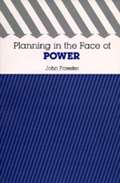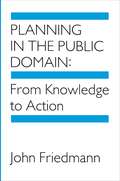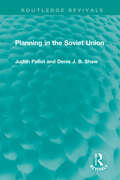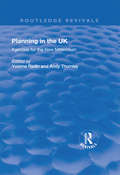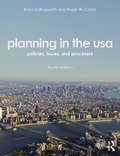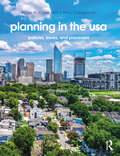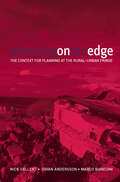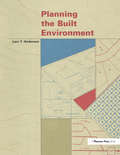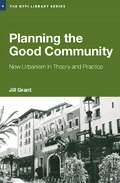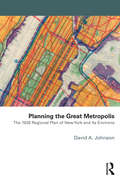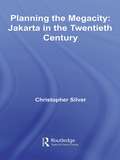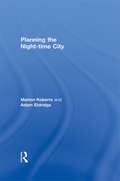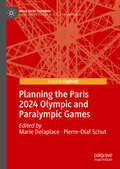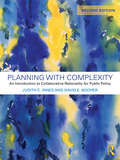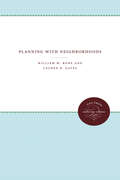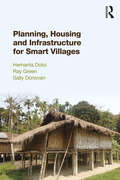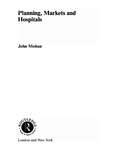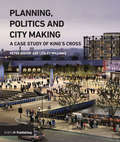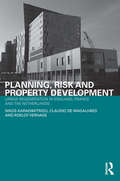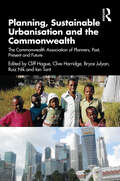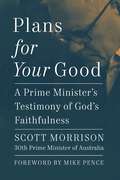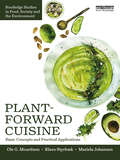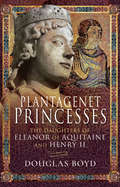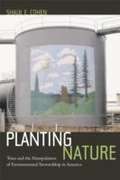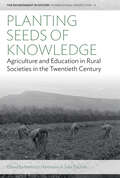- Table View
- List View
Planning in the Face of Power
by John ForesterThis book provides a systematic reformulation of the politics of professional practice in the arena of city planning, public policy making, and public administration and management. It has immediate implications for the study of administration and management and for students of administration and planning in schools of social work, education, and public health. While focusing concretely on problems of planning practice (e.g. planners' sources of influence, their difficulties of listening critically, their understandings of the politics of organizations), Planning in the Face of Power brings to bear a wide range of theoretical insights and so integrates social and political theory with the demands of actual practice. Accordingly, the book will be important to practitioners who seek to understand the pressures they face at work as well as social theorists who wish to integrate theory and practice more powerfully, but will also appeal to the general reader interested in gaining an understanding of the practice of planning in the face of the realities of social equality and power.
Planning in the Public Domain: From Knowledge to Action
by John FriedmannJohn Friedmann addresses a central question of Western political theory: how, and to what extent, history can be guided by reason. In this comprehensive treatment of the relation of knowledge to action, which he calls planning, he traces the major intellectual traditions of planning thought and practice. Three of these--social reform, policy analysis, and social learning--are primarily concerned with public management. <P><P>The fourth, social mobilization, draws on utopianism, anarchism, historical materialism, and other radical thought and looks to the structural transformation of society "from below." After developing a basic vocabulary in Part One, the author proceeds in Part Two to a critical history of each of the four planning traditions. The story begins with the prophetic visions of Saint-Simon and assesses the contributions of such diverse thinkers as Comte, Marx, Dewey, Mannheim, Tugwell, Mumford, Simon, and Habermas. It is carried forward in Part Three by Friedmann's own nontechnocratic, dialectical approach to planning as a method for recovering political community.
Planning in the Soviet Union (Routledge Revivals)
by Judith Pallot Denis J. ShawOriginally published in 1981 and based on the authors’ own research, this book provides a comprehensive review of planning in the Soviet Union up until the early 1980s for both geographers and Soviet specialists. Planning was particularly important in the Soviet Union since not only most spatial change, but all economic planning was the product of a systematic socio-political ideology. Planning was therefore the key to understanding the Soviet economy, society and spatial change. When it was first published, this was the first study in which the focus had been directed specifically at spatial planning in the Soviet Union in any systematic way.
Planning in the UK: Agendas for the New Millennium (Routledge Revivals)
by Andy ThornleyThis title was first published in 2003:The advent of the Labour government in 1997 provoked major change in the political landscape of the UK. Priorities changed and different themes moved to the top of the agenda such as local democracy, community, transparency, sustainability and co-ordinated or 'joined-up' thinking. Many of the new priorities, such as community empowerment, involved a reappraisal of the purpose and procedures of planning, while others changed the legislative and institutional frame within which planning operated. This indispensable volume traces and analyzes the implications for planning created by this political shift. Presenting an overview of the general debates on contemporary UK planning, the book proceeds to identify four major areas as key themes for planning in the third millennium. These are: the new institutional context; ensuring social inclusion and participation; promoting sustainability; and the debate over building at higher densities on Brownfield sites. Illustrated with in-depth case studies, the book provides a timely and important examination of the current state of planning in the UK and suggests best-case scenarios for the future.
Planning in the USA
by Roger Caves J. Barry CullingworthThis extensively revised and updated fourth edition of Planning in the USA continues to provide a comprehensive introduction to the policies, theory and practice of planning. Outlining land use, urban planning, and environmental protection policies, this fully illustrated book explains the nature of the planning process and the way in which policy issues are identified, defined, and approached. This full colour edition incorporates new planning legislation and regulations at the state and federal layers of government, updated discussion on current economic issues, and examples of local ordinances in a variety of planning areas. Key updates include: a new chapter on planning and sustainability; a new discussion on the role of foundations and giving to communities; a discussion regarding the aftermath of Katrina in New Orleans; a discussion on deindustrialization and shrinking cities; a discussion on digital billboards; a discussion on recent comprehensive planning efforts; a discussion on land banking; a discussion unfunded mandates; a discussion on community character; a companion website with multiple choice and fill the blank questions, and 'test yourself' glossary terms. This book gives a detailed account of urbanization in the United States and reveals the problematic nature and limitations of the planning process, the fallibility of experts, and the difficulties facing policy-makers in their search for solutions. Planning in the USA is an essential book for students, planners and all who are concerned with the nature of contemporary urban and environmental problems.
Planning in the USA: Policies, Issues, and Processes
by J. Barry Cullingworth Roger W. CavesExtensively revised and updated, Planning in the USA, fifth edition, continues to provide a comprehensive introduction to the policies, theory, and practice of planning. Outlining land use, urban planning, and environmental protection policies, this fully illustrated book explains the nature of the planning process and the way in which policy issues are identified, defined, and approached. The new edition incorporates new planning legislation and regulations at the state and federal layers of government and examples of local ordinances in a variety of planning areas. New material includes discussions of • education and equity in planning; • the City Beautiful Movement; • Daniel Burnham’s plan for Chicago; • segregation; • Knick v. Township of Scott; • reforming single-family zoning and regulatory challenges in zoning and land use; • Daniel Parolek’s ‘Missing Middle Housing’; • climate change, mitigation, adaptation, and resiliency; • the drinking water crisis in Flint, Michigan; • sharing programs for cars, bicycles, and scooters; • hybrid electric and autonomous vehicles; • Vision Zero; • COVID-19 relief for housing; • Innovation Districts, Promise Zones, and Opportunity Zones; • the sharing, gig, and creative economies; • scenic views and vistas, monuments, statues, and remembering the past; and • healthy cities, Health Impact Assessment, and active living. This detailed account of urbanization in the United States reveals the problematic nature and limitations of the planning process, the fallibility of experts, and the difficulties facing policy-makers in their search for solutions. Planning in the USA, fifth edition, is an essential book for students of urban planning, urban politics, environmental geography, and environment politics. It will be a valuable resource for planners and all who are concerned with the nature of contemporary urban and environmental problems.
Planning on the Edge
by Johan Andersson Nick Gallent Marco BianconiMore than a tenth of the land mass of the UK comprises 'urban fringe': the countryside around towns that has been called 'planning's last frontier'. One of the key challenges facing spatial planners is the land-use management of this area, regarded by many as fit only for locating sewage works, essential service functions and other un-neighbourly uses. However, to others it is a dynamic area where a range of urban and rural uses collide. Planning on the Edge fills an important gap in the literature, examining in detail the challenges that planning faces in this no-man’s land. It presents both problems and solutions, and builds a vision for the urban fringe that is concerned with maximising its potential and with bridging the physical and cultural rift between town and country. Its findings are presented in three sections: the urban fringe and the principles underpinning its management sectoral challenges faced at the urban fringe (including commerce, energy, recreation, farming, and housing) managing the urban fringe more effectively in the future. Students, professionals and researchers alike will benefit from the book's structured approach, while the global and transferable nature of the principles and ideas underpinning the study will appeal to an international audience.
Planning the Built Environment
by Larz AndersonPlanning the Built Environment takes a systematic, technical approach to describing how urban infrastructures work. Accompanied by detailed diagrams, illustrations, tables, and reference lists, the book begins with landforms and progresses to essential utilities that manage drainage, wastewater, power, and water supply. A section on streets, highways, and transit systems is highly detailed and practical. Once firmly grounded in these "macro" systems, Planning the Built Environment examines the physical environments of cities and suburbs, including a discussion of critical elements such as street and subdivision planning, density, and siting of community facilities. Each chapter includes essential definitions, illustrations and diagrams, and an annotated list of references. This timely book explains new physical planning methods and current thinking on cluster development, new urbanism, and innovative transit planning and development. Planners, architects, engineers, and anyone who designs or manages the physical components of urban areas will find this book both an authoritative reference and an exhaustive, understandable technical manual of facts and best practices. Instructors in planning and allied fields will appreciate the practical exercises that conclude each chapter: valuable learning tools for students and professionals alike.
Planning the Good Community: New Urbanism in Theory and Practice (RTPI Library Series)
by Jill GrantAn examination of new urban approaches both in theory and in practice. Taking a critical look at how new urbanism has lived up to its ideals, the author asks whether new urban approaches offer a viable path to creating good communities. With examples drawn principally from North America, Europe and Japan, Planning the Good Community explores new urban approaches in a wide range of settings. It compares the movement for urban renaissance in Europe with the New Urbanism of the United States and Canada, and asks whether the concerns that drive today’s planning theory – issues like power, democracy, spatial patterns and globalisation- receive adequate attention in new urban approaches. The issue of aesthetics is also raised, as the author questions whether communities must be more than just attractive in order to be good. With the benefit of twenty years’ hindsight and a world-wide perspective, this book offers the reader unparalleled insight as well as a rigorous and considered critical analysis.
Planning the Great Metropolis: The 1929 regional plan of New York and its environs (Planning, History and Environment Series)
by David A. JohnsonAs the Regional Plan Association embarks on a Fourth Regional Plan, there can be no better time for a paperback edition of David Johnson’s critically acclaimed assessment of the 1929 Regional Plan of New York and Its Environs. As he says in his preface to this edition, the questions faced by the regional planners of today are little changed from those their predecessors faced in the 1920s. Derided by some, accused by others of being the root cause of New York City’s relative economic and physical decline, the 1929 Plan was in reality an important source of ideas for many projects built during the New Deal era of the 1930s. In his detailed examination of the Plan, Johnson traces its origins to Progressive era and Daniel Burnham’s 1909 Plan of Chicago. He describes the making of the Plan under the direction of Scotsman Thomas Adams, its reception in the New York Region, and its partial realization. The story he tells has important lessons for planners, decision-makers and citizens facing an increasingly urban future where the physical plan approach may again have a critical role to play.
Planning the Megacity: Jakarta in the Twentieth Century (Planning, History and Environment Series)
by Christopher SilverIn this book, the first on the planning history of Jarkarta, able expert Christopher Silver describes how planning has shaped urban development in Southeast Asia, and in particular how its largest city, Jakarta, Indonesia, was transformed from a colonial capital of approximately 150,000 in 1900 to a megacity of 12–13 million inhabitants in 2000. Placing the city's planning history within local, national and international contexts, exploring not only the formal planning actions, but how planning was shaped by broader political, economic, social and cultural factors in Indonesia’s development, this book is an excellent resource for academics, students and professionals involved in urban planning, history and geography as well as other interested parties.
Planning the Night-time City
by Marion Roberts Adam EldridgeThe night-time economy represents a particular challenge for planners and town centre managers. In the context of liberalised licensing and a growing culture around the '24-hour city', the desire to foster economic growth and to achieve urban regeneration has been set on a collision course with the need to maintain social order. Roberts and Eldridge draw on extensive case study research, undertaken in the UK and internationally, to explain how changing approaches to evening and night-time activities have been conceptualised in planning practice. The first to synthesise recent debates on law, health, planning and policy, this research considers how these dialogues impact upon the design, management, development and the experience of the night-time city. This is incisive and highly topical reading for postgraduates, academics and reflective practitioners in Planning, Urban Design and Urban Regeneration.
Planning the Paris 2024 Olympic and Paralympic Games (Mega Event Planning)
by Marie Delaplace Pierre-Olaf SchutThis book is the first volume to provide a comprehensive account of mega-event planning for the Paris 2024 Olympic and Paralympic Games. It offers a useful summary of the themes and debates relating to urban planning for the Paris Olympics, based on the results of a research programme (Observatory for Research on Mega-Event) funded by Gustave Eiffel University and Paris Est University and partly carried out with the organisers of the Games and their stakeholders. The authors address all aspects of the bidding process, the organisation of the Games and the construction of the social legacy of the Games.
Planning with Complexity: An Introduction to Collaborative Rationality for Public Policy
by Judith E. Innes David E. BooherIn an era of rapid change, uncertainty, and hyperpartisanship, when wicked problems abound, tools for solving public problems are more essential than ever. The authors lay out a new theory for collaborative practice in planning, public administration, and public policy. Planning with Complexity provides both theoretical underpinnings and extensive case material on collaboration and offers ways of understanding and conducting effective practice. Collaborative rationality means collaboration that is inclusive, informed, grounded in authentic dialogue, and that results in wise and durable outcomes. The scholar-practitioner author team builds on more than 40 years of research, teaching, and practice addressing environmental issues, housing, and transportation. This second edition updates the case studies and adds new examples reflecting the global spread of collaborative practices. It builds on insights that have recently emerged in the literature. More than 75 new references have been incorporated, along with new tables. This book is essential for students, educators, scholars, and reflective practitioners in public policy fields in the 21st century.
Planning with Neighborhoods (Urban and Regional Policy and Development Studies)
by William M. Rohe Lauren B. GatesNeighborhood planning programs involve citizens in developing plans and self-help projects for their neighborhoods through local organizations. They also assist residents in reviewing projects developed by city agencies. Based on a survey of fifty-one neighborhood planning programs and in-depth case studies of Atlanta, Cincinnati, Houston, St. Paul, Wilmington, N.C., and Raleigh, Planning with Neighborhoods offers the first comprehensive description and evaluation of the effectiveness of these programs.Moving beyond theory, this study reviews the actual accomplishments and limitations of neighborhood planning programs and offers specific recommendations for designing a successful program. Included are a thorough history of neighborhood planning programs and an examination of the social, political, and planning theories that support their existence. Eight propositions on the benefits of a neighborood-based approach to planning are derived from this theory and evaluated on the basis of actual experience with this type of program. Speaking to both academics interested in neighborhood issues and planning practitioners, Planning with Neighborhoods concludes with recommendations for establishing effective neighborhood planning programs and improving existing programs.Originally published in 1985.A UNC Press Enduring Edition -- UNC Press Enduring Editions use the latest in digital technology to make available again books from our distinguished backlist that were previously out of print. These editions are published unaltered from the original, and are presented in affordable paperback formats, bringing readers both historical and cultural value.
Planning, Housing and Infrastructure for Smart Villages
by Sally Donovan Ray Green Hemanta DoloiSome 7.3 billion people currently live on the planet. Of these, 3.4 billion live in rural areas. In just a few regions—Latin America, the Middle East and North Africa—less than 50 per cent of poverty is now located in rural areas. But for the rest of the world's regions between 55 per cent and 80 per cent of the poor continue to live in the countryside. Progress is being made, but much of the knowhow needed is not disseminated outside of a small coterie of professionals who work in the area. With urban development attracting a great deal of attention lately, poorer rural areas deserve the same and new knowledge for empowerment of rural communities is urgently needed. This book provides an overview of current thinking and practices that have emerged over the last thirty years for uplifting rural communities in developing economies. Drawing on a body of knowledge across a spectrum of relevant disciplines, this book provides a range of innovative ideas for rural planning, housing and infrastructure development. Governments in many emerging economies, where rural poverty is often most acute, have attempted to improve livelihoods. Approaches and techniques that have been used for urban development are often not applicable to rural communities. Studies show that money allocated for rural development is often not effectively spent due to distance, lack of infrastructure, lack of education, poverty and other factors. Meanwhile, the gap in development between the city and country continues to grow, sometimes leading to social and political instability, in both developing and developed countries. This book seeks to provide a guidebook for meeting such challenges. Through in-depth enquiry of global practices and thinking about rural development, and selected case studies, the authors argue that careful consideration must be given to incorporating issues of resilience, resourcefulness and the involvement of communities at grassroots levels in realising the transformation of rural settlements into Smart Villages.
Planning, Markets and Hospitals
by John MohanImproving access to hospital services has been a goal of public policy in Britain for over seventy years, but the means by which this goal is to be attained have changed significantly over time. Drawing substantially on original research, lanning, Markets and Hospitals represents a systematic attempt to access the strengths and weaknesses of different forms of planning and coordination of hospital development.The period covered includes: services prior to 1948; wartime hospital policy; the successes and failures of the mixed economy of health care in the inter-war period; the national hospital plan of 1962 and ultimately the market based reforms of 1991 and the changes since.This book makes a fresh contribution to enduring debates about planning and regulation of health care, about the governance of welfare services and about the appropriate role for voluntary, commercial and charitable provision of services. It reinterprets previous histories of hospital policy and questions whether current policies will reconcile competing goals of equity and choice.
Planning, Politics and City-Making: A Case Study of King's Cross
by Lesley Williams Peter BishopWhilst there is extensive literature analysing the design and function of new buildings and places, the actual process through which development proposals are actually fashioned – through complex negotiation and deal making, involving many different stakeholders with different agendas – is largely undocumented. Conventional planning theory tends to assume a logical, rational and linear decision-making process, which bears little relationship to reality. This book aims to shed some light on that reality. The King’s Cross scheme is one of the largest and most complex developments taking place in Britain today. The planning negotiations, which took six years, were probably some of the most exhaustive debates around a development ever. A report of over 600 pages of technical information was eventually presented to the committee, and after two evenings and ten hours of presentations and debate, the committee approved the scheme by just two votes.
Planning, Risk and Property Development: Urban regeneration in England, France and the Netherlands (Housing, Planning and Design Series)
by Roelof Verhage Nikos Karadimitriou Claudio De MagalhãesUrban regeneration schemes involving a wide range of actors and dependent on private investment are increasingly deployed in Europe’s cities with the aim of delivering private, merit and public goods. This book explores the relationships, objectives and strategies of the actors engaging in these schemes in cities of three advanced European economies. It researches the outcomes of actor interactions as these transform under the influence of changing market circumstances and associated risks. The book focuses on the way this change is reflected in the provision of mixed-use developments within a context of increasingly polarised housing markets and urban growth patterns. It argues that although these schemes can and do deliver much-needed dwellings, their exposure to market risks may in many cases cause them to fall short of the desired socio-economically sustainable outcomes.
Planning, Sustainable Urbanisation and the Commonwealth: The Commonwealth Association of Planners, Past, Present and Future
by Cliff Hague Clive Harridge Bryce Julyan Ruiz Nik Ian TantBy 2050, an additional 2.5 billion people will be living in the world’s towns and cities, almost 50% of them in the 56 Commonwealth countries. To a significant extent, the future of the planet hangs on how cities and human settlements are managed. It is in our cities that the emissions creating climate catastrophe are stoked and where change can – and must – make a difference at scale. Food security, water, basic services, migration, shelter, jobs, environment: sustainable urbanisation is about changing direction to strive for a fairer and less environmentally damaging future. This well-illustrated book by authors from around the Commonwealth tells how the Commonwealth Association of Planners across five decades has campaigned to make a difference. It also looks ahead, scoping the urgent, practical action that is now required.
Plans For Your Good: A Prime Minister's Testimony of God's Faithfulness
by Scott MorrisonScott Morrison, Australia's 30th Prime Minister (2018-2022), offers a unique insider's account of a Christian who was open about his faith and operated at the top level of politics for more than a decade. During one of the toughest periods since the second world war, covering drought, wildfires, a global pandemic and recession, he chronicles God's faithfulness throughout, win or lose, public criticism or public success.Less political memoir and more pastoral encouragement, Morrison is passionate about encouraging others to discover how they can access and see the many blessings of God in their own lives, no matter their circumstances, drawing on Jeremiah 29:11, that God's plans are for our good and not our harm, to give us a future and a hope. In each section Morrison asks the questions all of us are looking to find answers to:Who am I? Discovering your purpose.How should I live? Finding your pathway.What should I hope for? Embracing your future. Full of fascinating insights into the handling of some of the most significant global events and issues of our time Morrison's honest, vulnerable and reflective answers offers a unique lens to better understand your relationship with God and the blessing that can flow from such a relationship.Alongside an account of high-level politics in a new media age where cancel culture, identity politics and deep secularization is taking hold across so many western societies, creating a truly post Christian west, Morrison testifies to the faithful love and blessings of God.
Plant-Forward Cuisine: Basic Concepts and Practical Applications (Routledge Studies in Food, Society and the Environment)
by Ole G. Mouritsen Klavs Styrbæk Mariela JohansenPlant-Forward Cuisine is a beautifully illustrated book that promotes the environmental and health benefits of a plant-forward diet and will inspire readers with a range of exciting recipes.The book addresses the urgent need to make changes to those culinary cultures where animal-sourced proteins play a central role. To ensure that there is enough food for a growing world population, to lessen the burden on the environment, and to promote healthier, sustainable eating patterns, it is crucial to transition to a diet that focuses primarily on plants as the key ingredients. Yet, many people dislike the taste of plants because of their texture and lack of sweetness and umami. Luckily, the book provides a solution to these challenges. It offers key scientific descriptions of the physical characteristics of plants, mushrooms, algae, and fungi and their nutritional components, along with information about creation of texture and flavour. Armed with this knowledge, the recipes then provide tips and tricks for transforming plants into delicious meals with pleasing textures and flavours. The authors stress that it is not necessary to embrace a fully vegetarian or vegan diet. Rather, they suggest that taking a flexitarian approach, which incorporates small quantities of animal products to elicit umami, may be a more viable and lasting solution for people at large. Throughout the text readers will find interesting narratives about various aspects of green gastronomy around the world. The book concludes with two helpful reference sections: a glossary of main ingredients used in the recipes and a compilation of ingredients that can be used to add taste and aroma.This book will be of great interest to those concerned with building a sustainable food system, and it will serve as a practical guide for those seeking to transition to plant-rich diets without compromising their taste experience and enjoyment of food.
Plantagenet Princesses: The Daughters of Eleanor of Aquitaine and Henry II
by Douglas BoydA look at the royal women of twelfth-century England—from the empowered to the imprisoned—and their roles in the ruling dynasty.Eleanor of Aquitaine and her second husband, Henry II, are commonly considered medieval figures, but their era was really the violent transition from the Dark Ages, when countries’ borders were defined with fire and sword. Henry grabbed the English throne thanks largely to Eleanor’s dowry, because she owned one third of France. But their less famous daughters also lived extraordinary lives. If princes fought for their succession to crowns, the princesses were traded—usually by their mothers—to strangers to gain political power without the usual accompanying bloodshed. Years before what would today be marriageable age, royal girls were dispatched to countries whose speech was unknown to them, and there became the property of unknown men—their duty the bearing of sons to continue a dynasty and daughters who would be traded in their turn. Some became literal prisoners of their spouses; others outwitted would-be rapists and the Church to seize the reins of power when their husbands died. Eleanor’s daughters Marie and Alix were abandoned in Paris when she divorced Louis VII of France. By Henry II, she bore Matilda, Aliénor, and Joanna. Between them, these extraordinary women and their daughters knew the extremes of power and pain. Joanna was imprisoned by William II of Sicily and treated worse by her brutal second husband in Toulouse. Eleanor may have been libeled as a whore, but Aliénor’s descendants include two saints, Louis of France and Fernando of Spain. And then there were the illegitimate daughters, whose lives read like novels. This fascinating volume tells their stories.
Planting Nature: Trees and the Manipulation of Environmental Stewardship in America
by Shaul Ephraim CohenShaul E. Cohen exposes how big business, the government, and tree planting groups often work together to manipulate trees - and the people who plant them. He reveals how positive associations and symbols invested in trees are exploited by an interlocking network of government agencies, private timber companies, and nongovernmental organizations to subvert the power of people who think that they are building a better world. Cohen traces the roots of the story in the history of tree planting in the United States, the rise of popular sentiment around trees, the development of the Arbor Day holiday, and the growth of tree-planting groups such as the National Arbor Day Foundation and American Forests. Drawing from internal papers, government publications, advertisements, and archival documents, Cohen illustrates how organizations promote tree planting to deflect attention from the causes of environmental problems, masking business-as-usual agendas. Ultimately, Planting Nature challenges the relationships between a "green" public, the organizations that champion environmental causes, and the powers that be, providing a cautionary tale of cooperation and deception that cuts across the political spectrum.
Planting Seeds of Knowledge: Agriculture and Education in Rural Societies in the Twentieth Century (Environment in History: International Perspectives #24)
by Julia Tischler Heinrich HartmannIn the late nineteenth and early twentieth centuries, agricultural practices and rural livelihoods were challenged by changes such as commercialization, intensified global trade, and rapid urbanization. Planting Seeds of Knowledge studies the relationship between these agricultural changes and knowledge-making through a transnational lens. Spanning exchanges between different parts of Europe, North and South America, the Indian subcontinent, and Africa, the wide-reaching contributions to this volume reform current historiography to show how local experiences redefined global practice.
